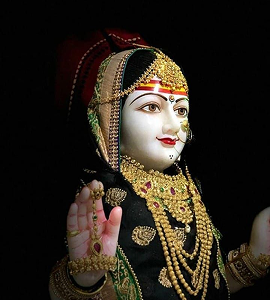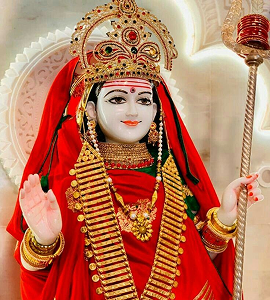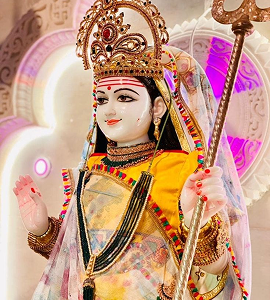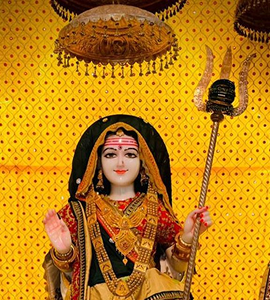



Khodiyar Maa: The Divine Protector of Rajpara
Our Belief in the Divine Power of Khodiyar Maa
We devotees believe that Khodiyar Maa is the eternal symbol of power, protection, and devotion. Her divine grace has been worshiped for centuries, and her blessings continue to guide her devotees.
The Legend of Khodiyar Maa
Khodiyar Maa’s history dates back to ancient times when she appeared to protect her devotees. She is worshiped as the goddess of courage, prosperity, and well-being.
Khodiyar Maa and Rajpara
Rajpara holds a special place in the history of Khodiyar Maa. It is believed that this sacred place witnessed many divine events associated with her. Devotees from across Gujarat visit Rajpara to seek her blessings.
The Birth of Khodiyar Maa's Legend
The legend of Khodiyar Maa originates during the 8th century in Gujarat. A devotee named Mamad Ji Charan, who was childless, was blessed by Nagdev (Serpent God), and through divine intervention, Khodiyar Maa and her sisters were born. Khodiyar Maa was gifted with supernatural powers and chosen to protect dharma.
Establishment of Devotion
Khodiyar Maa performed miracles to help people, protect devotees, and punish evil forces. She became known as a guardian deity, especially for the Rajput and Charan communities. The first temples dedicated to her were built in villages and small settlements.
Rajpara Becomes a Spiritual Hub
By this time, Rajpara became an important pilgrimage site for Khodiyar Maa’s devotees. Local rulers and kings recognized her divine influence and encouraged temple construction.
Expansion of Khodiyar Maa’s Worship
Worship of Khodiyar Maa spread across Gujarat, especially in Bhavnagar, Rajkot, and Saurashtra. Temples were built by devotees to honor her presence and miracles were recorded in folklore.
Royal Patronage & Growing Influence
The rulers of Bhavnagar State and Krushnakumar Sinh Ji and his ancestors recognized Khodiyar Maa as the protector of Rajpara and surrounding regions. Festivals and grand processions were held in her honor.
British Rule & Khodiyar Maa’s Continued Devotion
Even during British colonial rule, Khodiyar Maa remained an important figure of faith and resistance. Rajpara Temple was further developed, attracting more pilgrims from all over Gujarat.
Major Temple Renovations & Spread of Devotion
Large-scale renovations took place in Rajpara and other Khodiyar Maa temples. More historical records and folk tales were documented, preserving the legend of Khodiyar Maa.
Khodiyar Maa’s Global Recognition
With digital media and globalization, Khodiyar Maa’s devotion spread beyond India, with temples even established in the USA, UK, and Africa. Rajpara became an even bigger pilgrimage site, with thousands visiting every year.
Grand Festivals & Recognition
Annual festivals at Rajpara Temple attract devotees, historians, and spiritual leaders. Her legacy remains strong, with continued miracles and unwavering faith among devotees.